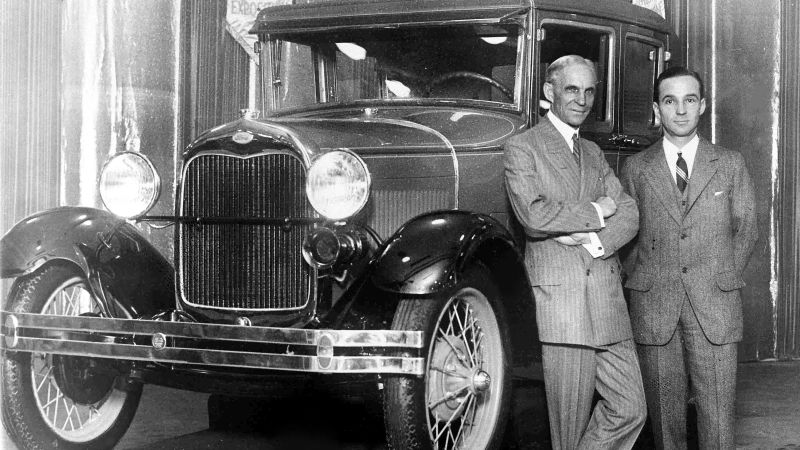
Cars have been around for more than a century now. We take it for granted that we have names like ‘automobile’ and ‘car’ to describe these four-wheeled beasts we love so much; they’re the only names we’ve ever known. But, friends, it could have been worse. It could have been so much worse.
What started out as a quest to explore the rise and fall of some of America’s original auto manufacturers turned into a realization that, dear God, just about everyone who put an engine on some wheels had a different name for their creation. I mean, it makes sense; I’m sure the cavemen who invented clothing all had a different name for what they were covering their bodies with. It makes sense that cars wouldn’t have always been ‘cars’.
See, what we consider our norm today pissed off a lot of people back in the day. In an August 1897 issue, The New York Times reported that “the new mechanical wagon with the awful name automobile has come to stay”.
Wait, what? Awful? If that was so awful, then what were our other options?
Let’s Talk Patents
In 1792, Oliver Evans applied for a US patent in Philadelphia for what was, at the time, essentially a prototype of what we’d consider a car today. Its name? Oruktor Amphibolos. We’ve written a whole article about this legendary creation, but it was basically designed to dredge Philadelphia’s dockyards. It was the first self-propelled vehicle in America at the time, but it couldn’t actually dredge much of anything because Evans was mostly just excited to build an engine. It’s probably good that this thing didn’t stick around.
Advertisement
Then came George Selden, a patent attorney from New York. In 1879, he patented something he called a “road machine” (which is slightly more agreeable than the Oruktor). He hadn’t actually, y’know, built anything yet, but he kept expanding the patent throughout the years as automotive technology advanced because it meant he could collect royalties from American car manufacturers.
Good ol’ Henry Ford was rightfully annoyed that this guy who hadn’t even made anything could reap the benefits of all the hard work automakers were putting in. He took Selden to court in 1904, where the judge decided that Selden would have to build a road machine from his own patent. Selden couldn’t do it. In 1911, the patent was overturned, giving manufacturers the freedom to build cars at a lower cost, since they didn’t have to shell out big bucks to a guy whose claim to fame was some words on a page, not an automobile.
While the Selden drama was playing out, brothers Charles and Frank Duryea decided they wanted to expand their bicycle making business to include cars as well. They patented their “motor wagons” in 1895, and they had a pretty interesting history. Frank Duryea drove one of their cars to the win America’s first automobile race, averaging a whopping speed of 7.3 mph. The press they received meant they were able to sell the first commercial vehicle in the US, which was then promptly involved in America’s first recorded car accident. Nice. Motor wagons did not catch on.
Advertisement
And then, we had Henry Ford. Drawing his inspiration from the bicycle, Ford submitted a patent in 1896 for what he was calling a “Quadricycle”. It was a name that, thankfully, didn’t stick around for very long.
Thanks, Media
Early media references to cars utilized a wide variety of fun and creative names. There wasn’t any standardization yet as far as names or even designs went. For journalists and authors, it was basically a creative exercise to describe something they’d never seen before. A fine selection of their choices include:
- Autobaine
- Autokenetic
- Autometon
- Automotor horse
- Buggyaut
- Diamote
- Horseless carriage
- Mocole
- Motor carriage
- Motorig
- Motor-vique
- Oleo locomotive
- Truckle
So Where Did Today’s Names Come From?
‘Automobile’ was just one of the many words being thrown around back in the day. We’re not really sure how it came to be our standard, but its use in The New York Times was a key factor in its widespread adoption.
Advertisement
The name first originated with an Italian painter and engineer back in the 1300s. His name was Martini, and he, like Selden, never actually built a car. He did draw up plans for a four-wheeled man-powered carriage, though, and called it the automobile by combining the Greek word auto (‘self’) and the Latin word mobils (‘moving’). Or, a self-moving vehicle. Easy.
Plus, it sounded a whole lot nicer than something like ‘autobaine’. Yeesh.
“Car” had been around for a while. Derived from the Celtic word carrus (‘cart’ or ‘wagon’), it had been another name for horse-drawn carriages. It was a pretty easy transfer, given what some of the first vehicles looked like.
Advertisement
All I gotta say is, we got pretty lucky when it came to names.













